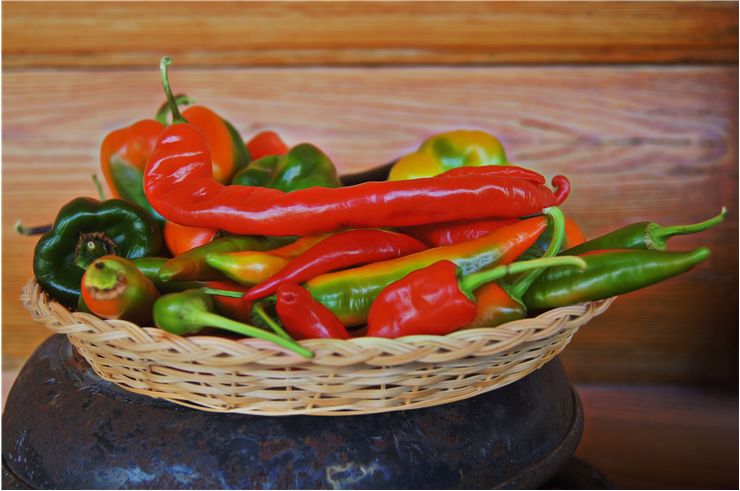Nutrition Facts and Health Benefits of Capsicum
Capsicum is another name for a plant also known as pepper or bell pepper. “Capsicum” name comes from Greek word “kapto” which means “to bite” while “pepper” come from the similarity in taste with “black pepper.” Spicy types of bell peppers are also called “chili peppers” or “chilies” while those with mild taste are sometimes called red pepper, green pepper or yellow pepper. Some countries call the fruit of this plant “paprika.” It looks like a vegetable and is used as a vegetable, but it is in fact - fruit.
- Capsicum originated in Americas more than 5000 years ago but can be found today all over the world.
- The oldest found capsicum was discovered in the remains of pottery from Puebla and Oaxaca, today's Federal Districts of Mexico.
- Capsaicin is an active component which can be found in chilli peppers. It is methyl vanillyl nonenamide and it can produce an intense burning sensation in the mouth when these peppers are eaten. The plant produces it to protect its seed from the mammals, which find this taste unpleasant, and from insects. Birds cannot feel it, so plants use them to spread the seed.

- Capsicum as genus consists of over 25 species but only five of them are domesticated. They all vary greatly in shape and color even within species. Some of them are even sold in both their immature green state and their red, yellow, or orange, ripe state.
- This fruit can be eaten raw, cooked, roasted, fried, dried or pickled.
- Capsicum grows on a short bush which can grow up to 1 meter and which has white flowers. It contains carotenoids, proteins, vitamin A, vitamin C, provitamins E, P, B1, B2 and B3, steroidal alkaloidal glycosides (solanine and solasadine), and coumarin.
- Capsicum can stay refrigerated for five days if it is placed in a plastic bag. Green peppers last longer than ripened ones. If they are frozen, they can last much longer.
- Red peppers are sweeter than other types of capsicum. Each has around 2 teaspoons of natural sugar. A bit less sweet is yellow pepper. Red capsicum also has the highest amount of vitamin C – one can have 1000 (one thousand) percent of daily need of this vitamin. Vitamin C in capsicum prevents blood clots.
- Capsicum is also high in antioxidants which minimize damage caused by the free radicals and with this prevent and treat heart diseases, osteoarthritis, bronchitis, asthma, cataract and other illnesses.
- High amounts of vitamins strengthen the immune system.
- Capsaicin from chilli peppers can be used in the treatment of pain if used topically – on the skin. It can block pain transmissions from skin to the spinal cord.
- Ingredients in capsicum also increase the metabolism and make organism burn calories faster which helps in losing weight. They also lower the blood pressure promoting cardiovascular health.
- Chilli peppers can treat colds and flu. They also stimulate stomach secretions and improve digestion.
- Capsaicin in capsicum destroys food-borne bacteria preventing them from affecting the body.
- Some say that capsicum is ideal for diabetic patients. Other say that topical application of capsicum on hair, although potentially painful because of capsaicin, prevents hair from falling off and helps maintain thicker and fuller hair.
- Some even say that capsicum and its capsaicin can prevent or even combat cancer. They say that red peppers can prevent prostate cancer and cancer of the cervix, pancreas, and the bladder.
- 100g of capsicum has 20 calories.
- Capsicum is also low in fat and carbohydrates which make it ideal diet food.
- Some researchers say that capsicum slows and inhibits the growth of fat cells. It activates AMP-activated protein kinase (AMPK), that in turn regulates eating behavior and energy expenditure.

